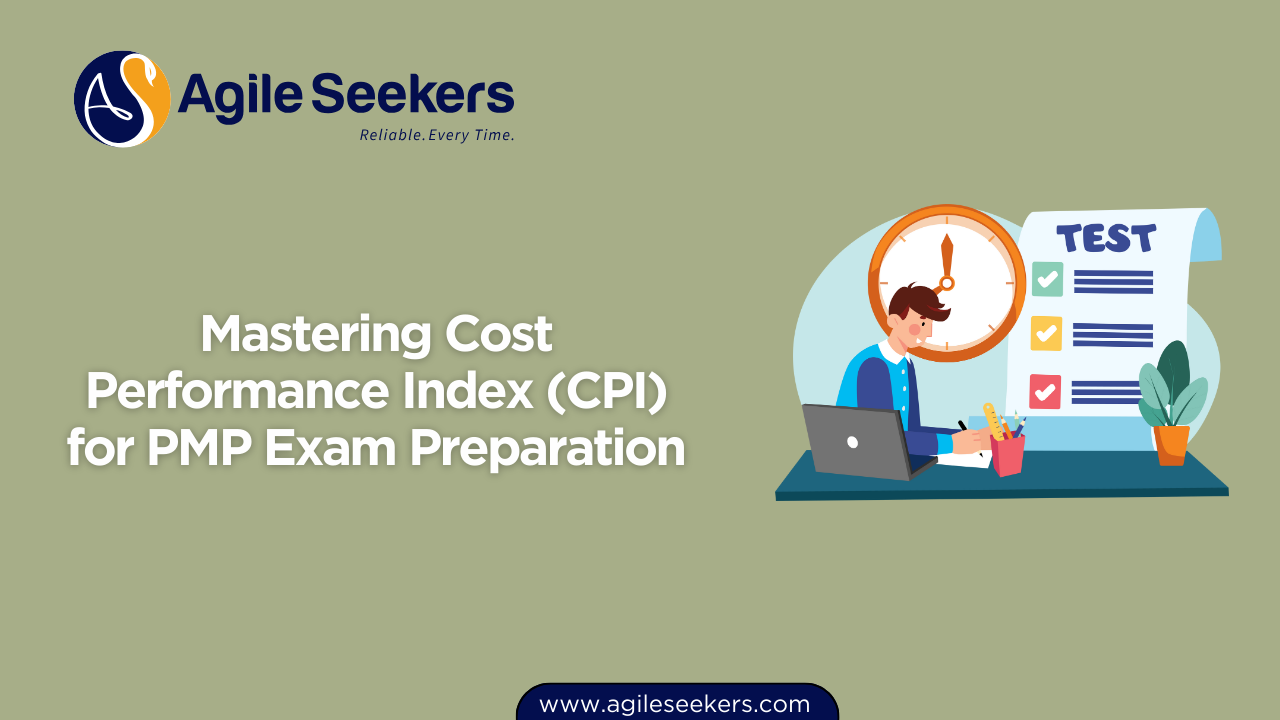Mastering Cost Performance Index (CPI) for PMP Exam Preparation

Effective project management goes beyond task management—it includes closely monitoring project costs. For PMP aspirants, grasping metrics like Cost Performance Index (CPI) is crucial. This detailed guide simplifies CPI, ensuring you're prepared for the PMP certification exam.
What is Cost Performance Index (CPI)?
Cost Performance Index (CPI) is a key metric within Earned Value Management (EVM) that measures a project's financial efficiency. In simpler terms, CPI tells you how effectively your project is using the budget.
- CPI = 1: Exactly on budget.
- CPI > 1: Under budget (efficient).
- CPI < 1: Over budget (inefficient).
CPI helps project managers quickly assess budget performance at any stage of a project.
Why CPI Matters for PMP Certification
CPI is essential for PMP candidates because it:
- Helps detect budget overruns early.
- Enables informed financial decision-making.
- Facilitates accurate budget forecasts.
- Enhances clear communication with stakeholders.
How to Calculate CPI
CPI calculation is straightforward:
CPI = Earned Value (EV) ÷ Actual Cost (AC)
Here's what each term means:
- Earned Value (EV): Budgeted cost of work actually completed.
- Actual Cost (AC): Actual expenses incurred for completed work.
Example of CPI Calculation
Suppose your project budget is $100,000. Midway through, completed work is budgeted at $50,000 (EV), but actual spending is $60,000 (AC).
CPI = 50,000 ÷ 60,000 = 0.83
A CPI of 0.83 means the project is over budget, prompting corrective actions.
Using CPI to Forecast Project Costs
CPI isn't just historical—it's predictive. Use this formula:
Estimate at Completion (EAC) = Budget at Completion (BAC) ÷ CPI
Continuing the example, with a BAC of $100,000 and CPI of 0.83:
EAC = 100,000 ÷ 0.83 ≈ $120,481
This means your project might exceed budget by around $20,481 if current trends continue.
Best Practices to Improve CPI
Improving CPI requires proactive strategies:
- Regular Budget Reviews: Frequently review budgets to spot issues early.
- Transparent Communication: Clearly communicate budget goals and responsibilities to your team.
- Robust Change Management: Control project changes tightly to prevent unexpected costs.
- Accurate Estimates: Invest effort in realistic cost estimation at project start.
- Continuous Learning: Take structured PMP training for deeper insights into CPI and other EVM concepts.
Common CPI Mistakes PMP Aspirants Must Avoid
- Confusing CPI with SPI: CPI measures cost; SPI measures schedule.
- Ignoring Early CPI Signs: Early CPI results often predict overall project health—act promptly.
- Excluding Indirect Costs: Always include all costs, direct and indirect, for accurate CPI calculations.
Practice CPI Questions for PMP Exam
To strengthen your understanding, practice with this PMP-style question:
Question: A project's Earned Value (EV) is $120,000, and Actual Cost (AC) is $150,000. What is the CPI?
- A) 1.25
- B) 0.80 (Correct Answer)
- C) 0.75
- D) 1.00
Explanation: CPI = EV ÷ AC = 120,000 ÷ 150,000 = 0.80.
Additional Resources to Master CPI
These resources will further assist your PMP preparation:
- PMI's Earned Value Management Guide
- AgileSeekers PMP Training Program for comprehensive exam preparation.
Conclusion
Mastering CPI significantly improves your ability to manage project budgets efficiently, a critical skill for your PMP certification. By calculating, interpreting, and acting on CPI, you ensure better financial control, accurate forecasting, and improved project outcomes.
Take advantage of structured PMP exam preparation with AgileSeekers to master CPI and other essential project management skills.
Also Check - Delphi Technique in PMP




















